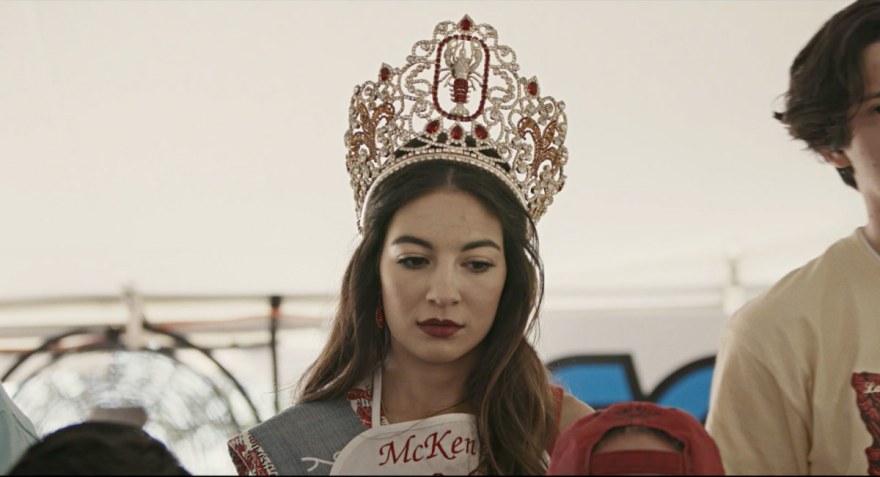Dinner with Acadiana
An interview with Guillaume Fournier, Samuel Matteau and Yannick Nolin, co-directors of Acadania
How did you work on the music for Acadiana?
Our first challenge was to find a balance between what was really happening and the point of view we wanted to establish for it. As a backdrop, we used the material that was present at the shooting, in other words, the sounds of the crawfish festival at Pont-Breaux. Then we began composing original music that would, perhaps, allow us to slide over to moments that were ethereal and poetic – and affirm our perspective. Before finding the right music, we explored several directions. Through this research, it became apparent that we didn’t want a recurring musical theme nor a classical melodic structure. We decided on ‘pad’ movements which evoke retro-nostalgic science-fiction, very heavy cord movements which underscore the weight or the decadence of the system, then a long crescendo which evokes the brewing anger of a boiling mass about to burst.
What does throwing the beads mean?
From an historical point of view, the tradition of throwing a pearl necklace – which is closely associated with the Mardi gras parade in New Orleans – began one day at the end of the 19thcentury. At the time, one threw a necklace at the person who best represented a certain Christian ideal: a purple necklace for the person best associated with justice, a gold necklace for the person best associated with power and a green one for the person associated with faith. This festive tradition – which rapidly became part of the custom – was adopted by all Louisianans who separated it from its meaning. Today the gesture is void of any sacred symbols and only serves to enhance the esthetics of one or another celebration such as the crawfish festival of Pont-Breaux. In our film directors’ eyes, this gesture is testimony to a certain kind of rupture between the Louisiana community and its traditions and it can be seen as the perfect metaphor for moral decline, for social or racial inequality that eats away at the community.
Why were you interested in the crawfish boiling?
The crawfish is one of the main symbols of Louisianan cuisine. It’s also one of the main symbols – if not the symbol – of the entire Cajun culture. In this case, we believe the crawfish represents many things in the film. We can think about the crawfish eating contest which attests to the decline of American culture, its taste for opulence or for excess. We can also think about the crawfish boiling meaning a certain hidden, simmering anger which is the fruit of decades of social and racial inequality in Louisiana. We can think about these people disguised as a crawfish who wear this symbol proudly but don’t know what it represents – if not the past ideal of their wounded community which is on the verge of disappearing along with them. The crawfish and all that they represent; the festival-rides that go around incessantly, the contest to see who can eat the most, the desacralized parade; we could also say “bread and circuses” for this fading community which belongs to an aging empire and is hopelessly on its path to its decline.
Why did you want the film to be non-speaking?
At the beginning, we didn’t plan to shoot Acadiana. We were supposed to attend the crawfish festival at Pont-Breaux to shoot a different film that addressed the question of Cajun identity. When we discovered this setting, the rides, this incredible place, we decided, by instinct, to do something else. We started filming not really knowing what we were doing. Then we discovered the emotional power of what we had shot. The tired faces, the big, old, rusty machinery, the orgy-like contests, the surreal parade… It was only once we’d seen the rushes after the first day’s shoot that we understood what we had gotten ourselves into. The tone was set for the rest. The remainder of the film had to follow silently, anxiously, as if it were our own perspective on this exotic reality and that we were conveying the reflection of a tired, declining America.
Would you say that the short film format has given you any particular freedom?
From the beginning, Acadiana was conceived as a short film. For us, it was important to condense our film to the maximum in order to give our audience a genuine viewing experience. This is the reason why we wanted to create a “short short film” that would be an experience something like a punch in the face. At any rate, we believe our concept couldn’t be stretched out for a feature-length film.
Acadania is being shown in the Lab Competition L2








